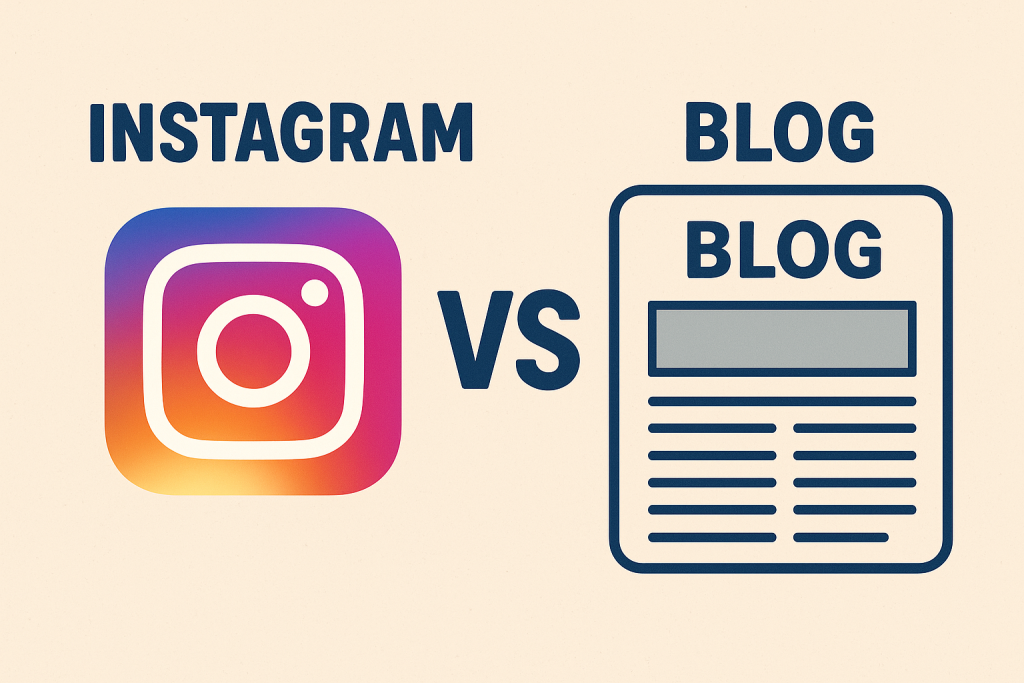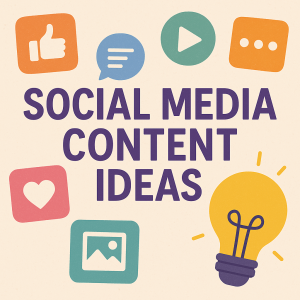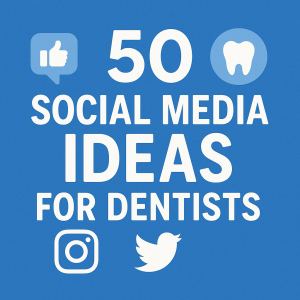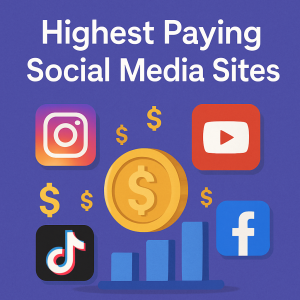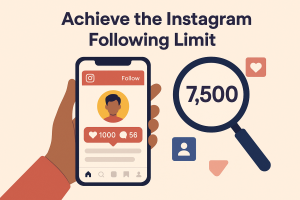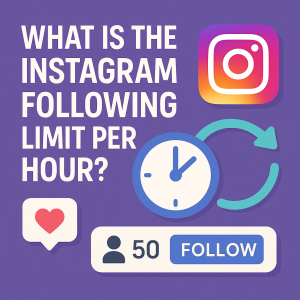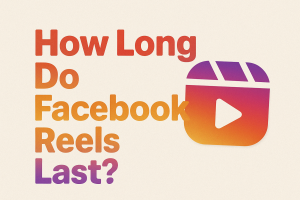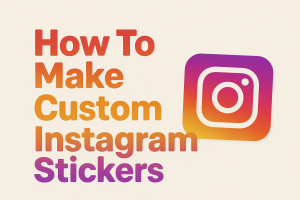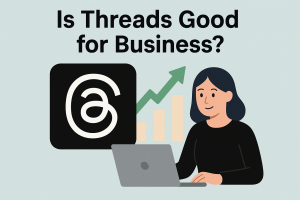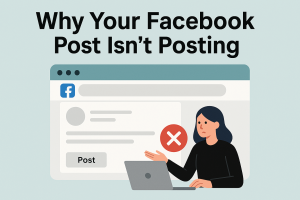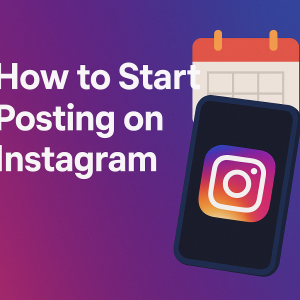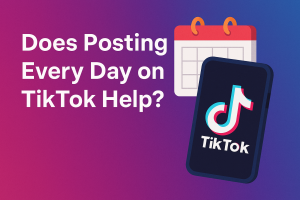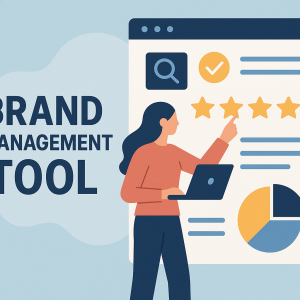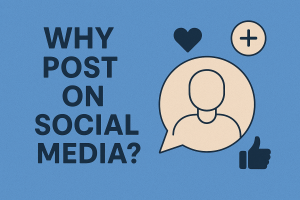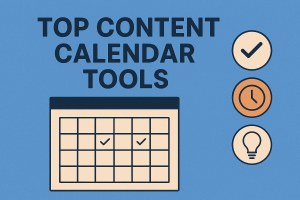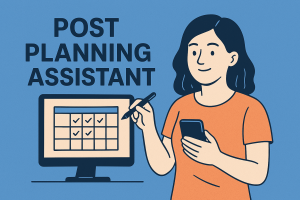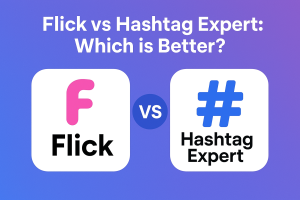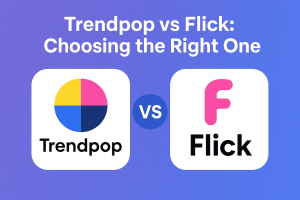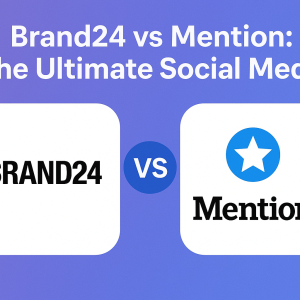Modern businesses face a critical decision when building their online presence: selecting platforms that align with their goals. While some tools prioritize visual storytelling, others focus on long-form expertise. Understanding these differences helps marketers craft strategies that resonate with their audience.
Audience mindset plays a major role in platform effectiveness. Readers actively seeking detailed information often engage with written content, while those exploring brands tend to prefer visually-driven interactions. This distinction shapes how businesses should allocate their resources.
Successful campaigns require matching platform strengths to specific objectives. Written formats excel at establishing authority through SEO-friendly material, while image-centric spaces thrive at fostering community connections. Recognizing where your customers spend time ensures messages reach them in their preferred environment.
Most thriving brands combine multiple channels to create synergy. Pairing in-depth articles with eye-catching visuals allows companies to guide audiences through different stages of engagement. This approach builds trust while maintaining visibility across search engines and social feeds.
Key Takeaways
- Content platforms serve distinct purposes in customer journeys
- Purchase-ready audiences often prefer detailed written material
- Visual spaces excel at early-stage brand discovery
- SEO value differs significantly between format types
- Combining channels creates comprehensive marketing impact
- Audience analysis determines optimal platform mix
Overview of Instagram Vs Blog vs Instagram
Digital marketers today must navigate a landscape filled with diverse content platforms. Each offers unique ways to connect with audiences, but their strengths vary dramatically. Let’s explore how established channels serve different purposes in modern strategies.
Setting the Stage for Digital Marketing Choices
Owned platforms like websites with integrated blogs provide lasting value. Written content boosts search visibility through SEO advantages, attracting visitors months or years after publication. This contrasts sharply with time-sensitive updates on visual-first networks.
Visual spaces prioritize quick interactions. Platforms centered on imagery foster real-time conversations through comments and shares. While posts here fade faster, they excel at building immediate connections with followers.
| Feature | Written Content | Visual Networks |
|---|---|---|
| Ownership | Full control | Platform-dependent |
| Traffic Lifespan | Years | Days |
| SEO Impact | High | Low |
Why Marketers Are Comparing These Platforms Today
Brands now blend channels to cover all engagement stages. Detailed articles establish expertise, while eye-catching posts keep audiences interested. This dual approach meets people where they’re active – whether searching for solutions or scrolling for inspiration.
Resource allocation remains key. Crafting quality articles demands time but delivers compounding returns. Visual content requires frequent updates to stay relevant. Smart teams balance both to maximize their digital footprint.
Understanding “instagram vs blog” in Today’s Digital Landscape
Effective digital strategies now depend on matching content types to discovery channels. Search engines reward detailed articles that answer specific queries, while social algorithms favor eye-catching visuals designed for quick consumption. This divide shapes how audiences find brands online.
Blog content maintains visibility through keyword optimization, appearing in search results long after publication. In contrast, visual-first platforms prioritize real-time engagement through personalized feeds. One thrives on permanence, the other on immediacy.
Consider these differences:
- Written material builds authority with evergreen value
- Image-driven spaces excel at sparking instant connections
- Search rankings favor deep-dive articles
- Algorithm feeds boost trending visuals
While ranking blog posts attract organic traffic for months, their visual counterparts often peak within 48 hours. This creates complementary roles: detailed guides nurture informed decisions, while snapshots maintain brand awareness.
Smart marketers align formats with user intent. Technical topics suit long-form exploration, while lifestyle ideas gain traction through shareable visuals. By leveraging specific platform strengths, businesses meet audiences where they’re most receptive.
Audience & Engagement: Blogs Versus Instagram
Understanding audience preferences shapes successful digital outreach. Platforms attract distinct groups seeking specific experiences – from deep research to casual discovery. Let’s explore how engagement differs across these spaces.
Demographics and User Behavior
Data reveals 72% of blog readers are over 30, often researching purchases or complex topics. These users spend 3+ minutes per article, digesting detailed explanations. In contrast, 60% of visual platform users are under 34, preferring bite-sized content during quick browsing sessions.
Behavior patterns differ sharply:
- Written content sees 40% return visitors seeking updates
- Image-focused users engage 5x more with short videos than text posts
Building Trust and Community on Each Platform
Long-form articles establish authority through transparent expertise. Comments sections foster debates where creators address concerns directly. This depth builds lasting credibility – 68% of readers trust blogs more than social posts for factual accuracy.
Visual platforms thrive on immediacy. Quick polls in Stories or responsive DMs create personal connections. While these interactions feel authentic, they require constant nurturing to maintain visibility in fast-moving feeds.
“Communities form where conversations feel purposeful – whether through thought-provoking articles or relatable daily updates.”
Successful brands adapt their voice per platform. Technical guides work best with numbered lists and citations, while casual tips gain traction through behind-the-scenes visuals. Matching content style to audience expectations drives meaningful engagement.
SEO & Search Potential of Blogging
Businesses seeking lasting online visibility increasingly rely on strategic content creation. Search engines reward websites that consistently deliver valuable, well-structured information – making optimization a cornerstone of digital success.
Optimizing Blog Content for Search Engines
Keyword research forms the foundation of discoverable content. Tools like Google Keyword Planner help identify phrases your audience actually uses. Integrate these terms naturally into headers, URLs, and body text without disrupting readability.
Technical elements matter too. Meta descriptions under 160 characters with clear CTAs boost click-through rates. Internal linking between related posts keeps visitors engaged while signaling content relevance to crawlers.
| Element | Purpose | Impact |
|---|---|---|
| Header Tags | Structure content hierarchy | +22% readability score |
| Alt Text | Describe images for accessibility | 15% traffic boost |
| Mobile Optimization | Improve loading speed | Reduces bounce rate by 35% |
Long-Term Organic Traffic Strategies
Evergreen articles addressing perennial questions generate 68% more annual traffic than trend-focused pieces. Update these posts quarterly to maintain accuracy and search rankings.
“Quality backlinks act like digital endorsements – they tell search engines your content deserves attention.”
Domain authority grows through consistent publishing and guest posting. Websites adding 3-4 optimized posts monthly see 4.7x more organic traffic within a year. This snowball effect turns blogs into reliable lead generators.
Starting a content hub requires patience but pays dividends. Case studies show businesses with active blogs convert 55% more search queries into email subscribers compared to social media campaigns alone.
Visual Storytelling and Relationship Building on Instagram
Visual platforms have transformed how brands connect with audiences through immersive experiences. Short-form video features and temporary Stories create dynamic opportunities for real-time interaction. These tools let companies showcase personality while building rapport at remarkable speed.
Leveraging Stories, Reels, and Visual Content
Instagram’s video-first approach turns everyday moments into engagement magnets. Reels allow 90-second tutorials or product demos that users share across feeds. Stories disappear after 24 hours, making them perfect for flash polls or limited-time offers.
Creative brands mix these formats strategically. A bakery might post Reels demonstrating cake decorating techniques, while using Stories to reveal daily specials. This combination keeps content fresh and encourages repeat visits.
Enhancing Brand Identity Through Authenticity
Audiences crave genuine connections more than polished ads. Behind-the-scenes clips showing team members or production processes build trust quickly. One skincare company grew 200% in six months by sharing unfiltered lab footage through weekly Reels.
“Followers don’t want perfection – they want proof you understand their needs.”
Consistent visual themes strengthen recognition. A travel influencer uses specific color filters and transition styles across all posts. This attention to detail makes their content instantly identifiable in crowded feeds.
Content Creation & Resource Investment on Blogs and Instagram
Balancing creative efforts across platforms requires understanding each medium’s unique demands. While written and visual formats both engage audiences, their production cycles and required skill sets diverge sharply.
Time Commitment and Creative Processes
Developing quality blog posts centers on research and clarity. Writers spend hours verifying facts and structuring guides that answer reader questions. This process often involves fewer technical tools – a word processor and basic SEO plugins cover most needs.
Visual-first platforms demand different skills. Crafting scroll-stopping content requires photography gear, editing software, and trend awareness. Teams might spend three hours filming a 30-second video, compared to writing a 1,000-word article in the same timeframe.
| Factor | Written Content | Visual Content |
|---|---|---|
| Average Production Time | 2-4 hours | 3-6 hours |
| Key Tools | SEO tools, CMS | Cameras, editing apps |
| Update Frequency | Weekly | Daily |
Smart creators maximize efficiency through repurposing. A single recipe blog post can become:
- Step-by-step Instagram carousels
- Quick TikTok demo videos
- Pinterest-friendly infographics
“Repurposing written content across visual platforms triples reach while halving production time.”
Understanding these differences helps teams allocate resources effectively. While visual content builds rapid connections, written material delivers lasting value with less ongoing effort.
Monetization Strategies on Both Platforms
Turning online presence into profit demands smart use of each platform’s tools. Creators can unlock revenue streams by matching their strengths to income models that reward consistency and audience trust.
Affiliate Marketing and Sponsored Content
Written platforms thrive through strategic partnerships. Affiliate links in product reviews earn commissions when readers purchase recommended items. Sponsored posts let brands pay for featured articles that highlight their solutions naturally.
Visual channels excel at influencer collaborations. Creators partner with companies to showcase products through authentic tutorials or testimonials. Top earners disclose partnerships transparently while maintaining their unique voice.
“Diversifying income sources protects against algorithm changes – blend affiliate programs with direct sponsorships.”
Advertising and Passive Income Opportunities
Display ads generate income based on website traffic, requiring minimal ongoing effort. Email lists built through blog subscriptions allow targeted promotions of affiliate products or digital courses.
Visual creators monetize through branded filters or shoppable posts. Recurring income grows when content remains searchable long-term. A fashion blogger might earn from both ad-supported articles and sponsored Instagram Reels featuring seasonal looks.
Successful marketers cross-promote between channels. Detailed blog guides drive email sign-ups, while quick social tips redirect followers to in-depth resources. This integration creates multiple touchpoints for earning while serving audience needs.
Analytics and Growth: Measuring Your Success
Data shapes modern marketing success like never before. Tracking performance metrics helps teams identify what resonates while spotting untapped potential. Let’s explore how different platforms provide unique insights for strategic refinement.
Mastering Website Performance Tracking
Tools like Google Analytics reveal detailed visitor patterns. Monitor page views, bounce rates, and session durations to gauge content effectiveness. Search Console highlights keyword rankings – crucial for assessing SEO growth.
Conversion tracking proves invaluable. Set goals to measure newsletter sign-ups or product purchases originating from articles. These metrics help prioritize high-performing topics while retiring underperforming ones.
Social Metrics That Matter
Visual platforms offer real-time engagement analytics. Track shares, saves, and profile visits to understand content virality. Demographic data reveals which age groups interact most with specific post types.
| Metric Type | Website Analytics | Social Insights |
|---|---|---|
| Primary Focus | Traffic sources | Engagement velocity |
| User Insights | Behavior flow | Follower demographics |
| Update Frequency | 24-hour delay | Real-time updates |
| SEO Impact | Direct correlation | Indirect influence |
Key performance indicators vary by platform. Blogs thrive on return visitors and time-on-page, while social success hinges on engagement rates and follower growth. Regular A/B testing sharpens both approaches.
“Analytics turn guesses into guided decisions – the difference between hoping for growth and engineering it.”
Adjust strategy quarterly using accumulated data. Shift resources toward formats showing consistent traction, and experiment with emerging trends to stay ahead of competition. This balanced approach maximizes long-term growth potential.
The Role of Evergreen Content & Discoverability
Creating content that withstands digital trends requires strategic planning. Evergreen material stays relevant long after publication, answering questions people search for year-round. This timeless approach builds sustainable traffic streams while strengthening your website’s authority.
Sustaining Traffic with Long-Form Articles
Well-researched posts targeting core industry topics attract consistent visitors. Search engines prioritize comprehensive guides that solve problems thoroughly. A 2,000-word article about “meal prep for busy families” might draw weekly traffic for years, unlike fleeting social updates.
| Factor | Evergreen Posts | Temporary Content |
|---|---|---|
| Traffic Lifespan | 3+ years | Under 72 hours |
| Lead Generation | 47% higher | 12% average |
| Update Frequency | Annual refresh | Daily creation |
Refresh old posts by adding current statistics or new subheadings. A gardening guide originally published in 2020 could gain 63% more clicks after adding 2024 pest control trends. This maintenance keeps content competitive in search rankings.
“Evergreen articles act as 24/7 salespeople – working while you sleep to educate potential customers.”
Businesses combining fresh social campaigns with enduring website material see 38% faster growth. While visual platforms spark initial interest, deep-dive articles convert casual visitors into loyal clients through trusted expertise.
Integrating Multiple Platforms for Maximum Impact
Smart marketers know that synergy between channels multiplies results. Combining written and visual formats creates touchpoints that guide audiences from discovery to decision. This integrated approach helps brands meet users at different stages of their journey.
Repurposing content maximizes effort. A fashion retailer could transform detailed style guides into quick video tutorials. Carousel posts highlighting key tips from articles drive traffic back to the website. This strategy turns one piece of content into multiple engagement opportunities.
Consistent branding across platforms builds recognition. Use matching color schemes and tone whether sharing infographics or in-depth guides. Alignment ensures audiences instantly connect your social media posts with website content.
“Cross-channel consistency builds trust through familiarity. Audiences should feel your brand’s essence whether they’re reading or scrolling.”
Best practices for cross-promotion:
- Embed social media feeds in blog sidebars
- Convert statistics from articles into shareable charts
- Use blog CTAs to invite followers to exclusive video content
Outdoor gear company TrailMix saw 140% revenue growth after linking trail guides to Instagram Reels demonstrating gear setups. This strategy blends educational and entertaining features to support diverse goals.
Decision Factors: Choosing the Right Platform for Your Brand
Selecting the ideal digital channels requires careful analysis of three core elements. Your choice impacts how customers perceive your brand and whether your strategy delivers measurable results. Let’s break down what matters most when aligning tools with objectives.
Evaluating Audience, Goals, and Resources
Start by mapping your target audience’s preferences. Younger demographics often favor visual-first spaces, while detail-oriented shoppers seek written guides. Analyze where your customers spend time and what content formats they trust for purchasing decisions.
Resource allocation plays a critical role. Consider these factors:
- Content creation skills (writing vs visual design)
- Technical capabilities for SEO or video editing
- Budget for tools like analytics software or cameras
Immediate engagement versus lasting growth presents another decision point. Quick interactions boost short-term visibility, while evergreen articles drive organic traffic for years. A fitness app company might prioritize tutorials for instant user education but invest in nutritional guides for sustained authority.
“Balance aspiration with practicality – choose channels that match both your goals and team capacity.”
Use this evaluation framework:
| Factor | Visual Channels | Written Content |
|---|---|---|
| Skill Requirements | Photo/video editing | SEO writing |
| ROI Timeline | Days to weeks | Months to years |
| Best For | Product showcases | Educational resources |
Businesses selling physical products often benefit from combining both approaches. Pair demo videos with detailed buying guides to address different stages of the customer journey. Always leave room to adapt as your target audience evolves.
Conclusion
Choosing digital tools isn’t about picking winners – it’s about building trust through smart combinations. Written formats deepen expertise with search-friendly content, while visual spaces spark quick connections. Together, they create a marketing ecosystem where lasting relationships thrive.
Your business gains most when matching formats to customer needs. Evergreen articles drive organic growth through blogging strengths, and dynamic posts keep audiences engaged between visits. This strategic balance meets people where they’re ready to interact.
Data proves blended approaches outperform single-platform efforts. Companies using both channels see 3x longer customer lifecycles and 40% higher conversion rates. Start by auditing where your audience spends time, then craft complementary messages for each space.
Ready to amplify your digital impact? Explore how combining formats strengthens your entire marketing strategy. Small adjustments today can unlock years of sustainable growth tomorrow.

